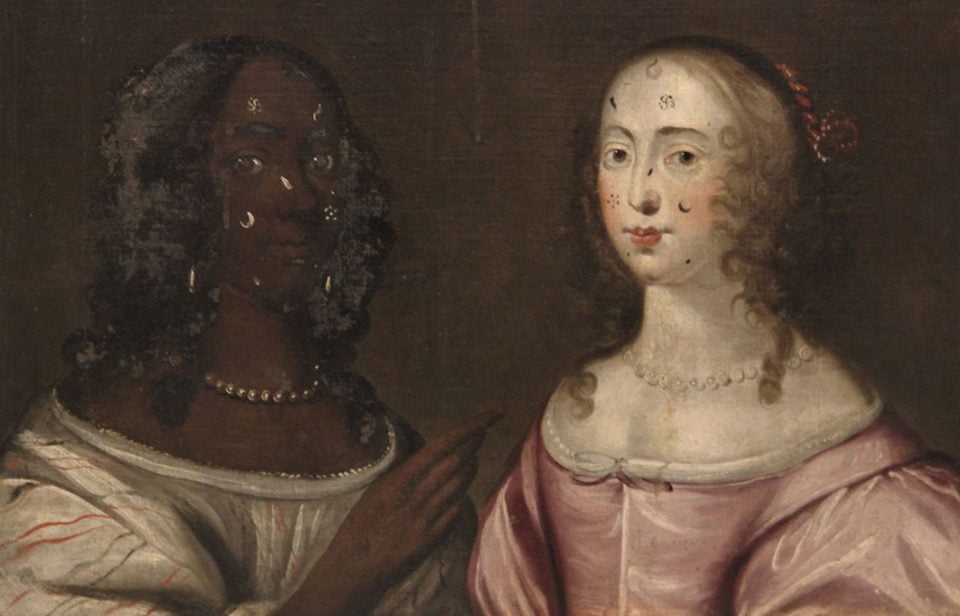
The U.K. government has temporarily stopped a 17th-century portrait depicting a Black subject from leaving the country in order to buy time for institutions to raise funds to acquire the rare painting.
The work, Allegorical Painting of Two Ladies Wearing Beauty Patches, dated 1650s and attributed to the English School, depicts two women adorned in similarly opulent dress, hair, and jewelry. It is remarkable because it is highly unusual to find a portrait from the era depicting a Black subject, and even rarer that the subject was not a child in a position of subservience.
The painting has been valued at £272,800 ($362,000), according to a statement from Arts Council Engalnd’s department of digital, culture, media, and sport.
Because it depicts the two women as being of equal status, the portrait contributes to the historical conversation about how race and gender were perceived in the 17th century. It also has an allegorical dimension, as the women are depicted wearing beauty spots, a cosmetic fashion which is condemned as a sin of pride via an inscription above them. Galleries and institutions in the U.K. will have until March 9, 2022, to make a bid for the work.
If it does not find a buyer, it will could be sold abroad.
“I hope a gallery or museum in the U.K. can be found to buy this painting for the nation, so that many more people can be part of the continuing research and discussion into it,” arts minister Stephen Parkinson of Whitley Bay said in a statement.
The decision to put an export bar on the work followed advice from the Reviewing Committee on the Export of Works of Art and Objects of Cultural Interest.
“Although not distinguished artistically, its imagery relates in fascinating ways to contemporary stereotypes of women, fashion, and, through the juxtaposition of the figures, race,” committee members Pippa Shirley and Christopher Baker said in a statement. “The fact that it has only recently emerged, and only one other related painting is known so far, and that it could be used to explore important aspects of Black culture in 17th-century Britain, makes it particularly important that it remains in this country so that its meaning can be widely studied and understood.”